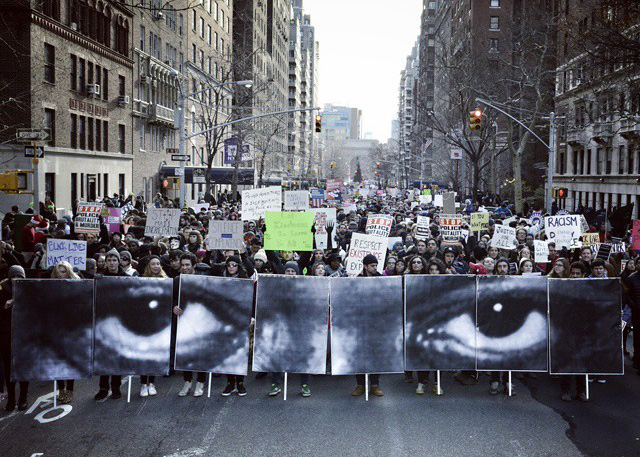At the Verso blog, Christina Heatherton and Jordan T. Camp explain the origins of “broken windows” policing in the US, an enforcement policy that targets low-level infractions—graffiti, littering, loitering—in the theory that this will reduce more serious crime. As Heatherton and Camp demonstrate, this policy has wreaked havoc on poor neighborhoods of color in the US, making police harassment a fixture of daily life and exposing residents to arbitrary violence at the hands of the police. The piece is from the introduction to the Verso book Policing the Planet: Why the Policing Crisis Led to Black Lives Matter, edited by Heatherton and Camp. Here’s an excerpt:
The underlying concept of broken windows policing is deceptively simple: to stop major crimes from occurring, police must first prevent small signs of “disorder” from proliferating, such as graffiti, litter, panhandling, public urination, the sale of untaxed cigarettes, and so forth. It proposes that the best way to prevent major crimes is for people to take responsibility for their neighborhoods and for the police to facilitate that process. The metaphor goes that if a window in a neighborhood stays broken, it signals neglect and encourages small crimes, which then lead to larger ones. Disorder in the form of minor violations is presumed to breed larger disorder. Instead of addressing “individual crimes,” broken windows theory has given police new authorization to control and moderate behavior. While analysts note that such invasive policing is by no means unique to the present moment, given the broad transformations in police policy, training, and funding, there is a general consensus that broken windows policing has constituted a fundamental expansion and redefinition of state capacities at the urban scale both across the country and worldwide.
In the current crisis of mass incarceration, broken windows is often presented as the milder, more community-minded alternative to more aggressive forms of policing. As Bernard E. Harcourt notes, this false presentation of broken windows as a substitute to mass incarceration belies its function as a robust supplement to it. Such supplements have only enhanced the collective punishments of communities already under siege. As deindustrialized cities have become veritable landscapes of broken windows—replete with abandoned homes, job sites, and factories—policy makers and police departments have utilized the logic of broken windows to locate disorder within individuals, offloading liability onto the bodies of the blamed.
Broadly speaking, broken windows policing has normalized a shift in state capacities away from the production of social goods and towards “security” concerns produced in their absence. Under this arrangement, the police can effectively function in an array of roles, such as mental health facilitators, school disciplinarians, public housing managers, and guards against park trespassing. In some municipalities, the police also aggressively function as surrogate tax collectors or “revenue generators” as the Department of Justice investigation into the Ferguson Police Department recently concluded. In less-well-studied examples, such as Los Angeles, $87 million of the $100 million city budget devoted to homelessness has been allocated to policing. Lest we forget, Akai Gurley was assassinated by officers patrolling public housing projects; twelve-year-old Tamir Rice was killed by police charged with securing a public park; and Eric Garner was strangled by police regulating a public street for the sale of untaxed cigarettes. Broken windows policing produces such fatal encounters wherein one overfunded segment of the state dominates, assaults, and helps to reinforce the eradication of another.
